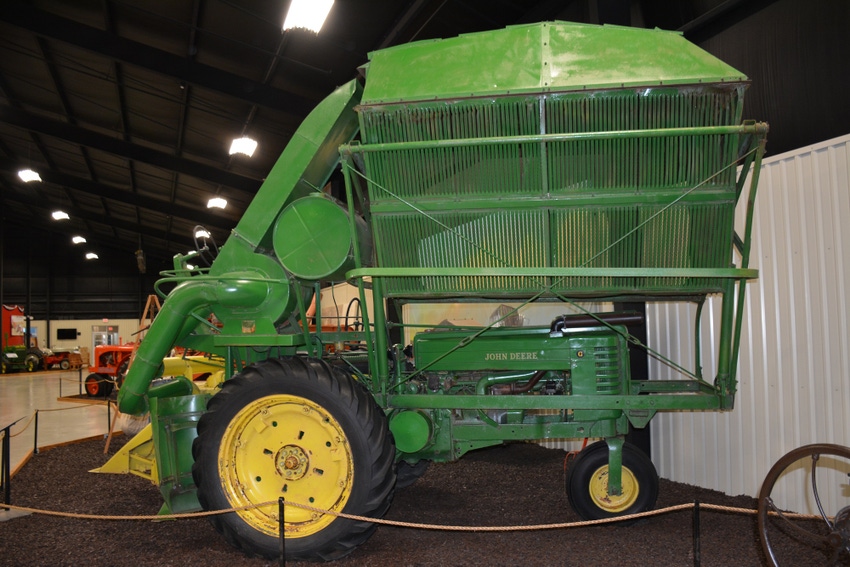
With 50 years of change farmers can now produce more food and fiber on fewer acres and with fewer nutrient inputs. “Corn yields in 1950 averaged 40 bushels per acre,” says Travis Miller, associate department head, Soil and Crop Sciences, Texas A&M University. “More recently, average corn yield was more than 160 bushels. Soybeans increased from 22 bushels in 1950 to 40-plus bushels in 1980.”
Miller took the opportunity to reminisce a bit during the grain session of the 50thAnnual Blackland Income Growth Conference recently in Waco.
“I’ve never done this research before,” he admitted, “but it is fascinating,” to look at the changes in agriculture that have paralleled the history of the B.I.G Conference.
Miller said some of the key advancements include: Pest management through genetically modified plants; institution of integrated pest management programs; plant breeding that allows high plant populations; precision planting equipment; better fertilizer formulations and application equipment; global positioning system agriculture; larger, faster and more efficient tractors and combines; mapping plant genomes that allows more rapid breeding; rapid and more accurate soil testing; and semi-dwarf wheat varieties.
KEY CHANGES
Miller listed some of the key advancements he turned up in his research.
1. In 1950, U.S. corn acreage totaled about 82 million. That figured dropped to 59 million in the late 60s but hit 90 million last year. Soybean acreage has increased from 18 million in 1950 to 80 million by 2007. Total corn production in 1950 totaled 2.7 billion bushels from those 82 billion acres. In 2009, on similar acreage, corn production topped 13 billion bushels. “That’s a 430 percent increase,” Miller said.
2. Soybeans and wheat have also seen significant production increases. Soybean acreage increased from 15 million in the 1950s to 74 million in 2011. Yield increased by 277 percent over that time. Wheat jumped from 71.3 million bushels in 1950 to just more than 1 billion bushels in the last few years. And that increase comes from about 24 percent fewer acres.
3. Wheat producers have benefitted from semi-dwarf varieties, Hessian-fly, cereal-mite, and greenbug resistance. The wheat genome is 95 percent sequenced and with more investment, we will see significant advancements.”
4. He said sorghum production has improved with yield increasing from 50 bushels per acre to about 63 bushels per acre. Significant advances in sorghum include the Stay-Green trait, developed in 1977. Greenbug resistance came along in 1984. Seed safeners and downy mildew resistance have also improved sorghum production, and Miller said non-GMO herbicide tolerance may soon be commercially available.
5. The Texas Blacklands, the focus for the annual conference, has witnessed a lot of ups and down with acreage and production, Miller said. “We harvested 700,000 acres of wheat in 2007.” That number dropped significantly last year because of the devastating drought. Weather has played a big role in yields for Blacklands crops through the years. “One of the biggest challenges faced by Blacklands farmers is the variability of crop yield due to weather.”
CROP MANAGEMENT ADVANCES
6. Crop management advances have made increased yields possible, when weather cooperates, Miller said. Development of effective herbicides was an early success story. “For instance, 2,4-D was first used in 1940,” he said. “Soon we had dozens of herbicides of multiple families available.” He said widespread use of commercial fertilizer also helped farmers increase yields. Soil test technology improved and aided farmers in identifying fertility needs.
“Technology improved with tools that measured to parts per billion,” he said.
Integrated pest management programs started in Texas “around 1972. We’ve also seen advances in agricultural mechanization and in reduced-till and no-till equipment.” He said planting equipment has come a long way from the “buster planters of the 1950s.”
7. Miller said genetic advances in corn have outpaced improvements in other crops. He said breeding for “an erect leaf angle” has been a significant achievement. The erect leaf angle, he says, allows farmers to increase plant population. “That’s the key to increased yield. In 1950, farmers planted from 4,000 to 5,000 plants per acre. Now, that’s up to 30, 000,” he said. “The erect leaf angle captures sunlight better.”
He said modern corn hybrids also have stronger stalks. Herbicide tolerance has helped farmers produce corn more efficiently and economically. Adding the Bt gene helps control borers, earworms and rootworms.
Miller said genetics have improved nutrient quality of corn, including high lysine. Other improvements include drought tolerance and improved nitrogen use efficiency, “which may be coming soon.”
“In 2009, the corn genome was decoded so (breeders) will be able to develop new hybrids faster,” Miller said.
8. He said his research also showed that corn farmers are using nutrients more efficiently. “In 1964, farmers used 125 pounds of fertilizer per acre. In 1982 that figure increased to 300 pounds per acre. In 2007, 225 pounds were applied per acre. “While yields are going up, the pounds of nutrients used are going down,” Miller said.
INCREASED EFFICIENCY
Miller said the advancement from one farmer feeding 25 people to 155 in 50 years is a significant achievement. “And we are doing it with far fewer farmers. The reason we have food on our table is because of the exponential growth from increased productivity.”
In 1962, one farmer fed 25.8 persons. In the 50 years since, he has taken on considerably more responsibility and now feeds 155.
“We’ve seen a remarkable change in agriculture,” said Travis Miller, associate department head, Soil and Crop Sciences, Texas A&M University.
About the Author(s)
You May Also Like






